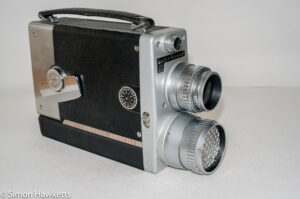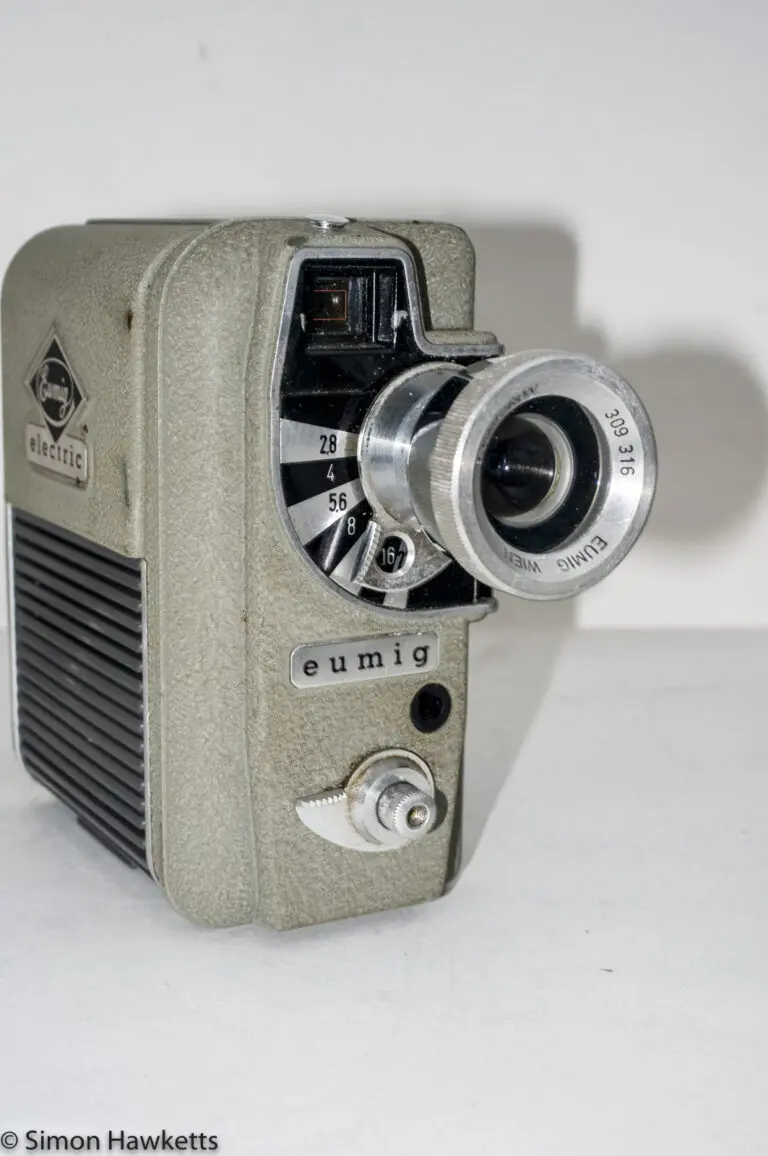Bell & Howell 200EE 16 mm cine camera
The Bell & Howell 200EE cine camera is a clockwork driven, multi speed cine camera which takes a 16 mm film cartridge and will run for up to 25 seconds on a single wind.
My Bell & Howell 200EE Camera
To be honest, I bought this 16 mm cine camera as a pure impulse buy because I saw it for only £0.99 as a starting bid and saw that it had a cartridge of 16 mm film in it with about 30ft of unexposed film. Since no one else bid, I only paid 99p and a few pounds for shipping.
When the camera turned up, the first thing I did was remove the film cartridge so that I could test the camera without exposing the film. With the film safely removed, I had a look round the camera and found it to be in generally quite good condition. The front panel with the lens and light sensor on seemed to move about a bit, but a quick tighten of the screws stopped that.
There are a few scratches and knocks on the body, which is not surprising considering the age of the camera, but overall it’s not too bad at all. The main thing is that the spring and wind mechanism seems fine and the shutter, which I can observe through the back of the camera, seems to work well.
Pictures of the Bell & Howell 200EE


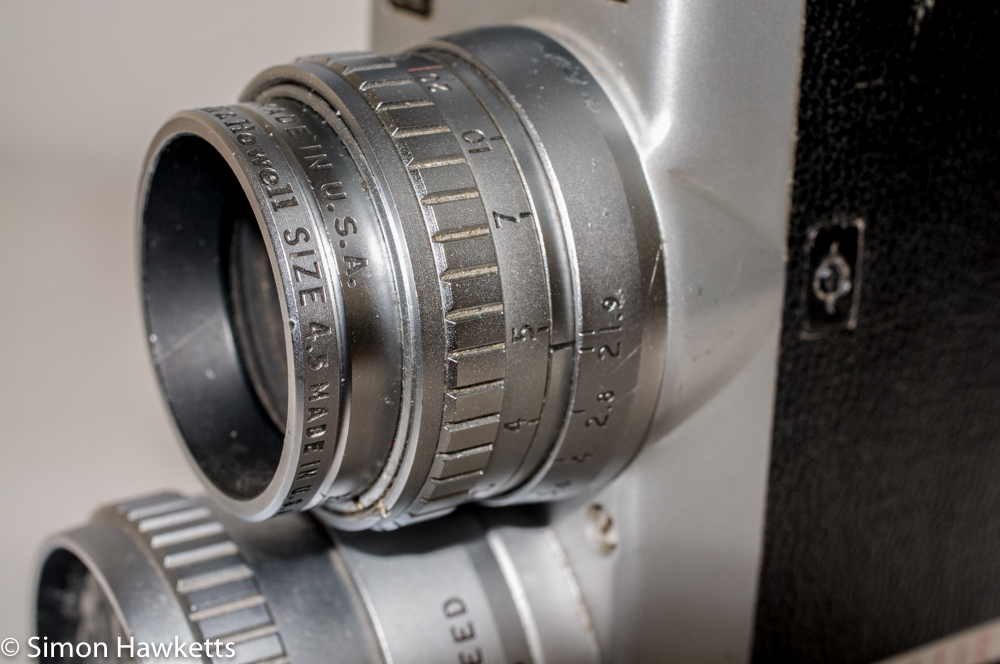

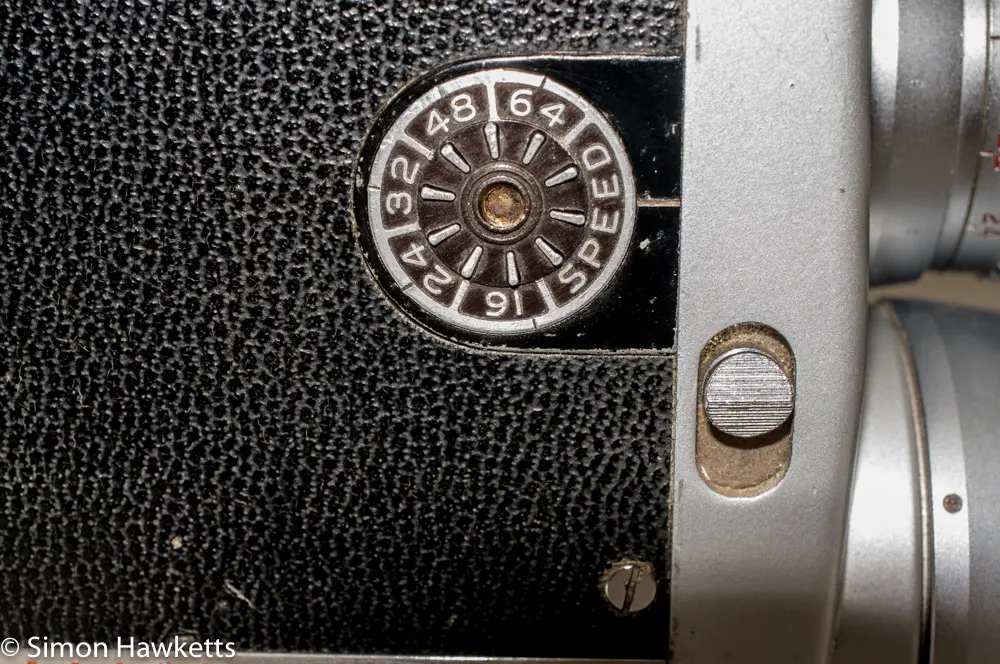
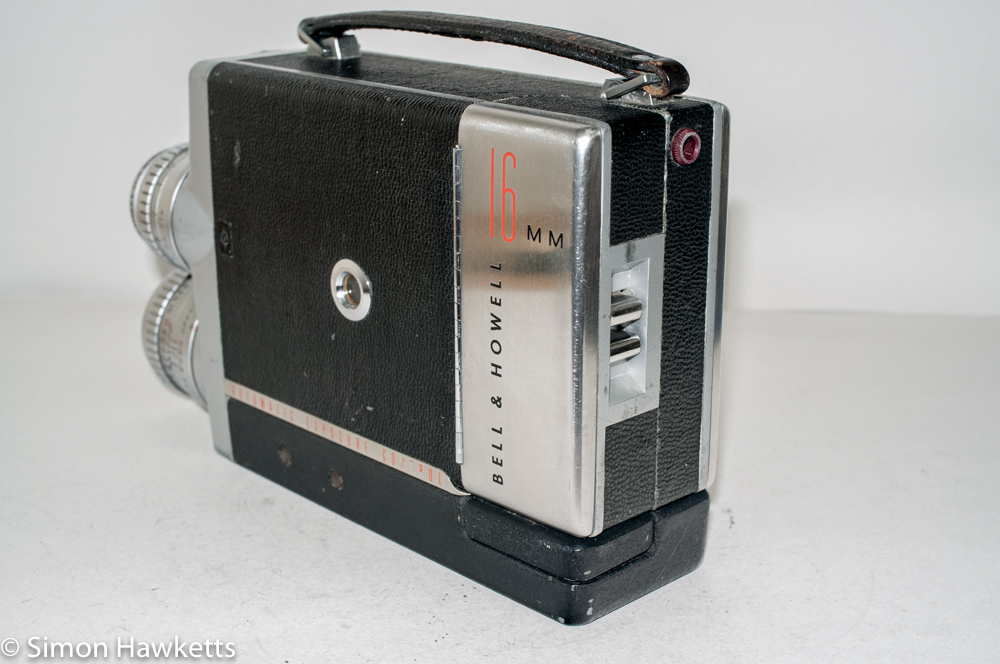








Bell & Howell 200EE Description
This is a viewfinder, clockwork drive, fixed focus and automatic exposure cine camera which takes a 16 mm film cartridge.
The thing you notice when you first pick up the 200EE is the weight of the camera. I guess it is because it is clockwork driven, and is encased in solid steel panels, but it is really heavy given the size of the unit. Of course, this also means the camera is very solidly built and looks like it could survive any amount of knocks and bumps.
The basic design of the 200EE is a rectangular box with a door at the back which opens to accept the film cartridge and the lens and light sensor at the front.
There is a cloth handle at the top of the camera and a screwed down trapdoor at the bottom which houses the 6 batteries which power the light measuring system. On the side of the unit is a large key to wind up the clockwork drive and a small dial to set the frames per second speed the camera runs at. On the opposite side is a small window which is directly over the window in the film cartridge which shows the amount of remaining film.
The lens fitted to my camera is a Bell & Howell 20 mm f/1.9 ‘Super Comat’.
Interestingly, the viewfinder lens, which is mounted above the main taking lens, unscrews and has written on it, ‘B & H for 20 mm on 16 mm’ which suggests it can be exchanged. This implies that the main lens can also be changed, but I couldn’t see how that would be accomplished since the lens seems permanently fixed.
Initially, the only information I could find on this camera on the Internet suggested that three models of the 200EE were made; one had a C type mount, another was a proprietary bayonet mount and a third had a lens turret. However, with a bit more digging, I found an article in Popular Photography from 1956 which explained that additional add-on lenses were available which screw over the fixed lens. The viewfinder lens is then replaced to suit.
The focus and aperture are set by conventional rings around the lens, but there is also a large light sensor mounted just below the lens which automatically adjusts the exposure as the light changes. It does this using a complicated system of mechanics to make sure any changes in light level as the camera is running are compensated with aperture changes. With the battery compartment open, it’s possible to see this system, and it featured in one of the pictures above.
In order to set the exposure system, it’s necessary to set the speed of the film loaded in the camera, and this is achieved by a scale on the sensor. The film speed is matched against the number of frames the camera is set to run at, and the exposure is then set.
The number of frames per second is set with a small dial on the side of the camera and allows 5 settings; 16, 24, 32, 48 and 64 frames per second. The amount of time the camera runs is very dependent on this setting – at 64 frames per second it is only about 8 seconds, but at 16 fps it is over 25 seconds. I guess it is basically a length of film which is constant.
The film cartridges themselves are quite cleverly designed. There is a small protruding peg on the side of the cartridge which mates with a slot in the camera body and as the film is pushed in a light shield on the front is moved out of the way. This means the film can be removed before it is finished and replaced with another one – possibly swap black & white for colour or change emulsion speed. The film cartridge itself says on it ‘This Magazine is the property of Kodak’ so I guess the films were sent to Kodak for processing and refilled with fresh film.
So, all in all an interesting cine camera and probably still capable of producing good results. Unfortunately, I have no means of showing 16 mm film, otherwise I would try the camera out with the remaining film. As it is, the camera just becomes an interesting entry in my camera collection.
Bell & Howell 200EE specifications
- Bell & Howell 200EE 16 mm viewfinder cine camera
- Clockwork driven
- Solid heavy construction
- Multiple running speeds, 16fps to 64fps
- 20 mm f/1.9 aperture
- Auto exposure sensor which constantly adjusts exposure to suit light
- Replaceable Kodak 16 mm film magazine
- Tripod socket on base
- Original Cost in 1956 $289.95
- Serial No: 59617
- Manual available on-line here.
Discover more from Everything Vintage
Subscribe to get the latest posts sent to your email.

